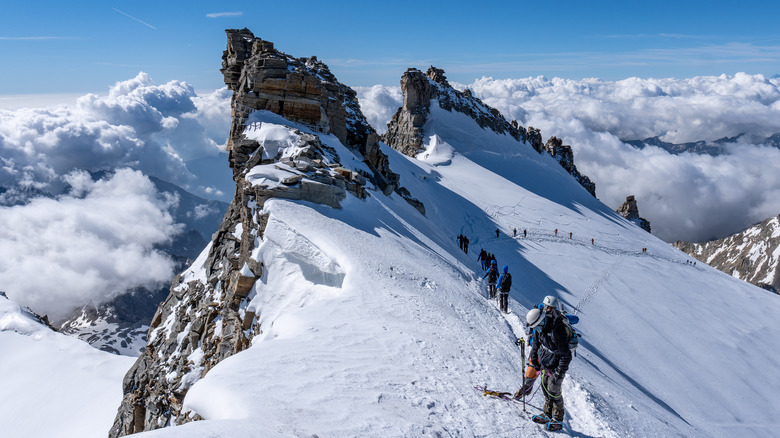Hikers Will Love This Stunning Italian Destination
Gran Paradiso National Park in Italy lives up to its name — it's a massive, wild paradise. The 174,445-acre park comprises five glacial valleys, which are home to 168 animal species, 1,124 plant species, 59 glaciers, and 183 lakes. Italy's very first national park, it was created in 1922 to protect the alpine ibex, a majestic mountain goat recognizable by its long, curved horns. At one point, the ibex had been hunted almost to extinction throughout the region.
The stunning park is located in the heart of the Italian Alps near the country's western border with France and northern border with Switzerland. The park is a scenic 44-mile drive from Turin, with each turn on the winding mountain roads leading up to the park revealing a new and breathtaking view of the Alpine landscape. Public transportation to the park is also available, with several bus and train routes from Turin and Aosta. However you choose to arrive, be mindful that the SP50 road through the Nivolet Pass closes during the winter months.
Park landscapes, flora, and fauna
With its never-ending miles of raw beauty, Gran Paradiso National Park is the Gucci of Italian alpine scenery. Dominating every horizon are the majestic Graian Alps, with the park's namesake mountain — Gran Paradiso — standing as the highest of them all. The jagged peaks are interlaced with rushing streams and picturesque lakes that are like azure eyes on a clear day, mirroring the translucent sky above them.
Each season introduces changes in the diverse landscapes of the park. From mid-June to mid-July, the high meadows are splashed with pink, red, and yellow wildflowers, while in fall, it's the forests on the valley floors that are ablaze with color. Snow blankets most of the park in the winter months, making it easier to spot wildlife against the white background.
Wildlife enthusiasts are in for a treat, as the park is home not only to the exotic ibex but also to many other fascinating creatures. These include the chamois (another kind of mountain goat), marmots, mountain hares, foxes, badgers, weasels, ermine, and lynx. More than 100 bird species frequent the park, including the Eurasian eagle-owl, ptarmigans, golden eagles, and many others. In addition to wildlife viewing, the park offers a smorgasbord of hiking opportunities for all kinds of adventurers, from the casual walker to the aspiring mountaineer.
Hiking and climbing in the park
There are a whopping 344 miles of hiking trails in the park. Many follow hunting roads created in the mid-1800s, when King Victor Emmanuel II used the land as his personal hunting reserve. For a day trip, walk along one of the park's nature trails, which range from leisurely to more strenuous and take from one to four hours. These trails pass occasional placards along the way that provide information about the flora, fauna, and history of the area. Notably, some of these trails (e.g., the first part of the Rhêmes-Notre-Dame) are wheelchair accessible.
For an epic multi-day trek, consider the classic alpine ibex trail, a 25-mile long route that typically requires six days and five nights of hiking, with overnight stays in mountain huts. The reward for your efforts? The chance to see different ecosystems in the park in all their splendor, from forests and valleys to high alpine meadows and rocky ridges with spectacular vistas. You will also have a good chance of seeing the ibex — the rock stars of the region — in their natural habitat.
Finally, those who want to try mountaineering should consider hiking to the top of the park's 13,324-foot tall namesake mountain, Gran Paradiso. While the climb does require technical gear and know-how, it is considered "fairly easy" compared to other similar peaks in the Alps. Guided trips depart from Turin or Chamonix and usually last from two to three days. The views from the summit are unsurprisingly remarkable. What else would you expect when reaching the top of paradise?


